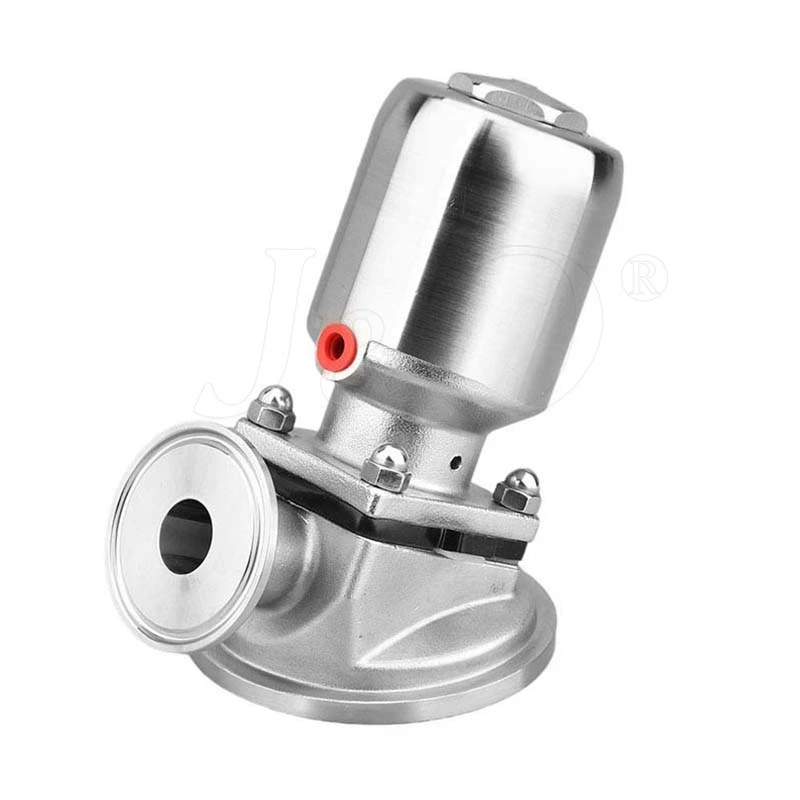Strict Maintenance Requirements For Stainless Steel Sanitary Diaphragm Valves
Sanitary Diaphragm Valve has strict maintenance requirements
The diaphragm valve is a special form of shut-off valve that appeared in the 1920s. Its opening and closing parts are a diaphragm made of soft material, which separates the inner cavity of the valve body from the inner cavity of the valve cover and the driving components, so it is called a diaphragm valve. The characteristics of the diaphragm valve are as follows: The most prominent feature is that the diaphragm separates the inner cavity of the lower valve body from the inner cavity of the upper valve cover, so that the valve stem, valve disc and other parts above the diaphragm are not corroded by the medium, eliminating the packing sealing structure and preventing the medium from leaking out.
1. The diaphragm made of soft seals such as rubber or plastic has good sealing performance. Since the diaphragm is a wearing part, it should be replaced regularly according to the characteristics of the medium.
2. Due to the limitation of the diaphragm material, the diaphragm valve is suitable for low pressure and relatively low temperature occasions.
The stainless steel sanitary diaphragm valve uses the valve stem to press the elastic film tightly against the valve seat to cut off the gas path. Turning the handwheel can drive the valve stem to move up and down, so that the diaphragm leaves the valve seat to open the valve or the diaphragm is pressed against the valve seat to close the valve. If this type of valve uses a nitrile rubber diaphragm, it is suitable for non-corrosive gases in the front stage and pre-pumping pipelines and at a temperature of -25 to 80°C. If a fluororubber diaphragm is used, it can be used in high vacuum systems with an operating temperature range of -30 to 150°C.
Although stainless steel sanitary diaphragm valves have various unique properties, each valve body has a service life and maintenance cycle during use. Only by doing a good job of maintaining the sanitary diaphragm valve can the valve body better perform its performance, better serve customers, and have a longer service life. The same requirements apply to sanitary diaphragm valves. During use, you must pay attention to maintenance. The maintenance requirements are very detailed in the instruction manual. During the use of the valve, you must do a good job of maintenance.
The maintenance of stainless steel sanitary diaphragm valves has certain requirements. Due to the diaphragm in this valve body structure, there are strict requirements in daily storage. The valve body must be placed in a dry and ventilated room to prevent the aging of the diaphragm from causing damage to the valve body. In addition to the maintenance of the sanitary diaphragm valve, the sanitary diaphragm valve is also an important maintenance component during use. The maintenance cycle of the diaphragm is different according to different media. The diaphragm needs to be replaced according to different cycles. Only in this way can the valve body be used better. The metal surface of the valve body must be kept clean and free of oil, and rust remover should be applied appropriately to prevent the valve body from severe oxidation corrosion.
